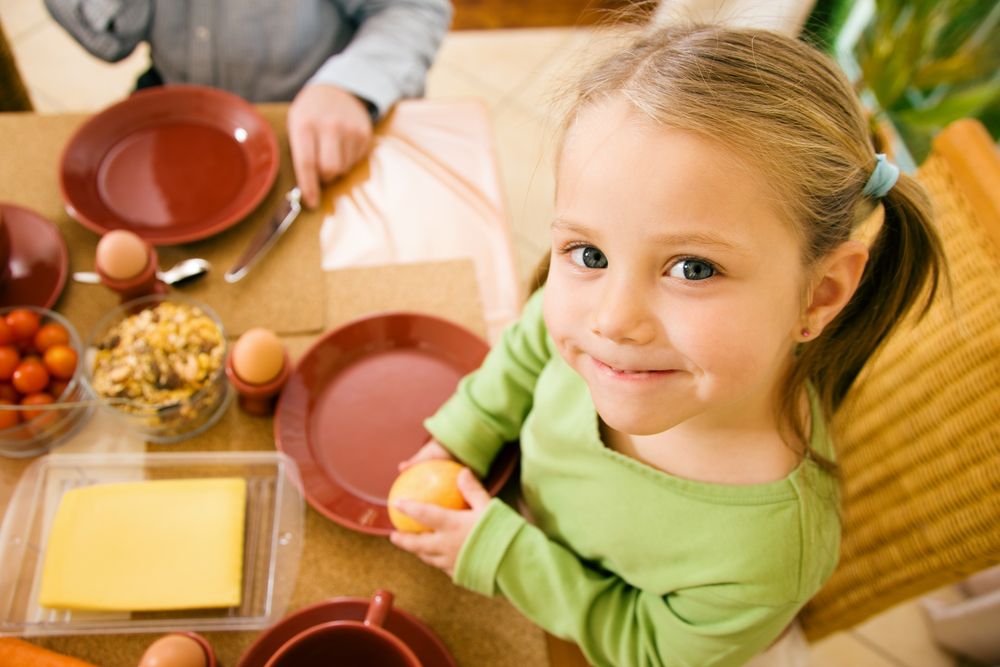How to turn mealtimes into successful development experiences | Careforkids.com.au
Published on Tuesday, 14 May 2019
Last updated on Monday, 29 August 2022

The simple act of eating with others has long been considered a celebrated occasion and an opportunity to learn and connect with family and loved ones. It's no different when it comes to mealtimes in Early Childhood Education and Care settings. However, in your desire to get all the children fed, dishes cleared away and move onto the next activity, it can be easy to fall into an autopilot routine that misses important opportunities for growth and development.
In this article we look at why mealtimes are so valuable for young children, remind you of the various strategies for encouraging education, and suggest ways to improve your current systems or create different mealtime experiences.
Learning while they eat
Ensuring children have a sufficient amount of wholesome nourishment throughout the day is vital for their growth, cognitive development, wellbeing, behaviour, and sleep quality. But mealtimes are also a chance for children to experiment, socialise and learn. Benefits for children include:
- Development of fine motor skills through using cutlery.
- Learning about nutrition by differentiating every day and occasional foods.
- Gaining increased autonomy as independence and self-help skills are practiced through choosing food, where to sit, and being involved in laying and clearing the table.
- Understanding others individual preferences, traditional cultures, and foods certain people like.
- Learning to share by taking two pieces of fruit off a tray and passing it on.
- Improved social skills through interaction with those around
- Opportunity to practice counting and literacy by highlighting the number of children sitting or bowls required, placenames or the letter certain foods start with.
Other mealtime opportunities to explore
There are many different ways to spice things up during mealtimes, and they don't have to be costly or labour intensive either. Here are a few ideas:
- Join in with lunch – it's a great idea to have educators eating alongside children and actively engage in conversation, just as you would at home with your own family. Educators can then share the lunchtime experience with children, and act as role models where healthy eating is concerned.
- Introduce progressive mealtimes – Some centres and other providers offer progressive mealtimes, where there are no strict eating schedules and children have food when they're hungry. Of course, this doesn't work for everyone and it can be difficult to monitor how much food each child is consuming, however, if you are interested in this approach you could try progressive morning and afternoon tea. A simple way to do this is to announce that snacks are available to eat, place them on a table and allow children to come, sit down and eat items when they want them. A lot of children actually eat more food this way when their play isn't directly interrupted.
- Change your location – If it's a sunny day, why not have an alfresco picnic on some rugs so children can experience their meals in nature. Or combine classes occasionally so that children eat alongside peers of different age groups, or switch rooms for a different perspective.
- Get children to help – In small groups let children on a roster system help wash fruit, chop up vegetables or mix ingredients so they feel more involved in the mealtime process and can learn about different foods and cooking. You can also have them help set and clear the table.
- Invite families to input ideas – Celebrate different children's cultures with food by asking parents to suggest traditional meals their family might eat, which can be replicated in the centre and discussed.
- Put eating music on – Try putting a relaxed and pleasant album on such as classical music to signify the commencement of mealtime, which then goes off when everyone is finished.
- Involve the chef – Have them talk to the children before they eat to talk about the history of the dish, what ingredients or cooking methods were used, what nutrients are included and how they benefit the body.
- Mix things up – Try new meals and ways of preparing and presenting food, use different cutlery or dishes, have a hero vegetable of the week, use lunchboxes, role play being at a restaurant, or anything else you can think of that will encourage stimulation whilst being nourished.
Tips for family day care providers
Of course, not all educators are working within a busy early learning centre environment with numerous staff members and resources. Managing mealtimes can be particularly challenging for carers within family day care services, so here are a few tips from Treehouse Childcare Centre for creating more positive (and smoother!) meal experiences in these settings:
- Plan your meals each week – Don't leave it to the last minute to work out what you're feeding everyone, make a plan in advance to also ensure you're covering all of their nutritional and individual requirements as well.
- Have a well-planned routine – For example, aim to feed older children first before younger ones to avoid long waiting times (hungry kids are cranky kids).
- Involve older children – Get them to help you prepare food, set up and clean up.
- Set up activities for afterwards – Have quiet activities set up for older children so they can easily move on to these after their meal while younger children are still eating.
Related Articles

Moon squirters and broccoli trees - The power of child focused language
Using child focused language to promote healthy eating.

Reduce your food waste
FeedAustralia's online meal planning resource assists early childhood education and care providers design healthier menus.
